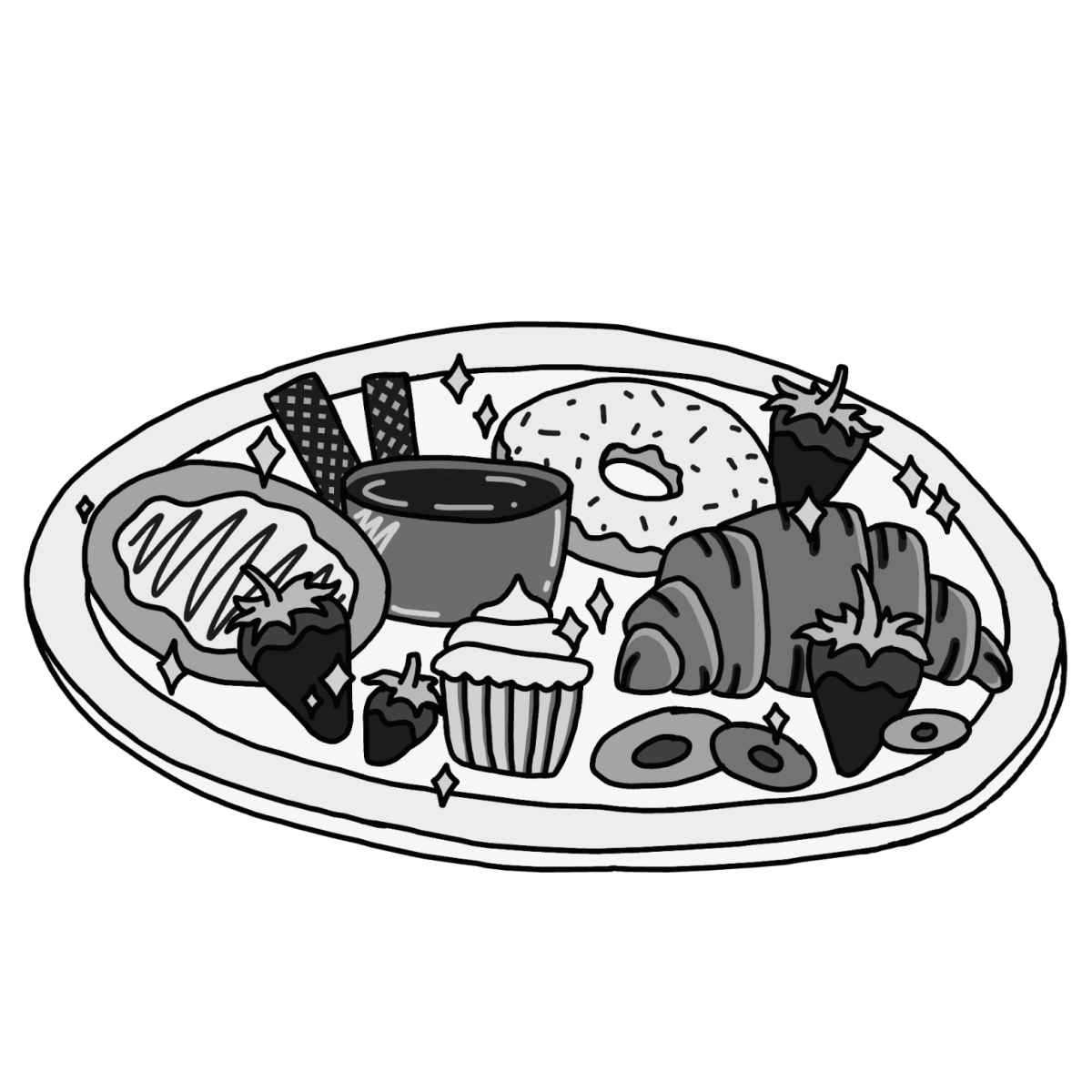From viral dessert trends to stress cravings, sweets play an important role in students’ lives. For many students, desserts are a way to unwind and reward themselves, with cravings often tied to heavy workloads, or a desire for balance between savory and sweet.
Senior Malia Lai believes that enjoying a dessert should not be associated with guilt, but instead about savoring life’s simple pleasures.
“Life is too short to be guilty about eating sweet treats. Whenever I think, ‘Oh, I should probably not,’ I think, ‘What if I died tomorrow? What if I got run over by a car tonight and I didn’t have that one sweet treat?’ So I really enjoy treating myself,” Lai said.
Senior Mia DeSagun explained that social media influenced her choice of dessert spots, often leading her to places she might not have found on her own.
“I’ve definitely noticed how social media has influenced where I choose to get sweet treats, especially living in a culinarily diverse location. It’s helped me discover new places to try,” DeSagun said.
Along with DeSagun, senior Xzyrus D’Angelo is influenced by the new stores and viral food trends that emerge, eager to try them out.
“I think desserts and sweets have been very glorified, especially through social media. So when people see a new dessert spot open up, it’s automatically like, ‘We gotta go try it,’” D’Angelo said.
While social media drives many to try new desserts, personal habits and cravings also shape indulgences. For Spanish teacher Amanda Vrabel, cravings follow a pattern, allowing her to manage her environment and be mindful when they strike.
“I never crave sweet food in the mornings. After lunch and after dinner, always,” Vrabel said. “I try not to have sweets in my home that are too addictive for me. For example, I cannot have peanut butter M&Ms in my home. I cannot stop myself.”
Along with Vrabel, others find different patterns related to their eating habits. For some, the urge to indulge is less about trends and more about personal triggers.
Lai explained that cravings for sweet treats can often be tied to stress.
“I tend to crave sweet treats after something stressful, or I’ll reward myself with one after completing something difficult,” Lai said.
Just as stress can drive cravings, others can find that their desire for sweets comes from a need to balance flavors. DeSagun sees sweet cravings as a balance between savory and sweet, a cycle that naturally influences her eating habits.
“After savory, you usually want sweet, and after sweet, you usually want savory,” DeSagun said.
For some, sweets are a natural balance to savory flavors, but for others, they become something to regulate and even restrict. D’Angelo shared how his perspective on deserts shifted.
“When I got introduced to the gym, I didn’t realize that people see sweets as something they can only give themselves once in a while. Honestly, it’s (eating sweets) been very rare for me now,” D’Angelo said. “Now, when I eat sweets, there’s this little psychological thing, like a voice in my head, that tells me it’s gross and disgusting.”
While some develop a more restrictive mindset toward sweets, others find that enjoying them is often tied to social settings. For DeSagun, the social aspect of eating with friends plays a role in her indulgence, making desserts a shared experience.
“I probably am more likely to get sweets with friends, and it definitely plays a role in how much I enjoy them,” DeSagun said “When I’m in others’ company and we convince ourselves to get something sweet because everyone else is getting something sweet, I feel more comfortable with indulging. Besides, company is always nice when you’re having dessert anyway.”


